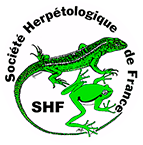Regulation
Several legal texts address the issue of IAS at the national, international and European levels.
The most recent was the Strategic Plan for Biodiversity 2011-2020 from the 2010 Nagoya Conference of the Parties, one of whose objectives is to ensure that “By 2020, invasive alien species and pathways are identified and prioritized, priority species are controlled or eradicated and measures are in place to manage pathways to prevent their introduction and establishment”.
At the European level an IAS strategy was approved in 2003 and aims at the implementation of coordinated measures across the EU Member States to prevent or minimize the impacts of these species on biodiversity, Economy and health.
A European regulation on the prevention and management of the introduction and spread of invasive alien species into the European Union came into force on 1st January 2015 (Regulation (EU) No 1143/2014 of the European Parliament and Of 22th October 2014).
In France, the national strategy on invasive alien species was drafted in 2016 and follows from the 2003 European strategy. It aims to protect marine, freshwater and terrestrial ecosystems, the animal and plant species they host, against the risk and effects associated with biological invasions. Its overall objective is to strengthen and structure collective action on prevention and awareness, the implementation of monitoring and rapid response systems, the long-term management capacities including ecosystem restoration, and the knowledge improvement.
Law No. 2016-1087 of 8th August 2016 for the recovery of biodiversity, nature and landscape includes a section on “control and management of the introduction and spread of certain animal and plant species”.
For further information, please consult the website of the Ministry of Environment:
→ www.developpement-durable.gouv.fr/especes-exotiques-envahissantes

The main IAS regulatory elements are set out in the Environmental Code (sections L411-3 to 6, L415-3, L411-8, L411-9, L-441-6, L-415-3 and R415- 1), the Law on the Strengthening of Environmental Protection or the Barnier Law of 1995 which supplements the Rural and Sea Fisheries Code (Articles L 251-4, L 251-6, L 251-12, L 251- 18, L 251-20) and Act No. 2009-9677 of 3rd August 2009 on the implementation of the Grenelle Environment Forum.
Thus, Article L 411-5 prohibits the introduction into the natural environment of animal and plant species, the list of which is fixed by decree. Article L 441-6 prohibits the introduction into the national territory, possession, transport, peddling, use, exchange, offering for sale, sale or purchase of any living specimen of these species. There are, however, exceptions for certain structures and grounds of general interest. Article L 411-8 allows, as soon as the presence in the natural environment of one of these species is mentioned, to take measures to capture them, to take them, or to destroy them. Finally, Article L 411-9 makes it possible to draw up and implement national control plans. Article L 415-3 imposes a penalty of two years’ imprisonment and a fine of 150,000 euros on the voluntary introduction into the natural environment of transporting, peddling, using, offering for sale, selling or buying a specimen of an animal or plant species in violation of Articles L 411-4 to L 411-6 or of the regulations and individual decisions taken for their application.
The decree on the control and management of the introduction and spread of certain animal and plant species was published in the Official Journal of 21st April 2017. This decree allows the implementation of Regulation (EU) No ° 1143/2014 of the European Parliament and of the Council of 22nd October 2014 on the prevention and management of the introduction and spread of invasive alien species (see above). It specifies the conditions concerning the derogations and the associated administrative authorizations. It also defines the existence of lists of species whose introduction is prohibited in the natural environment, lists formalized by inter-ministerial decrees. These decrees, currently being finalized, concern the continental France and the six ultra-peripheral regions: Guadeloupe, Saint-Martin, Martinique, Guyana, La Réunion, Mayotte. A decree of the same nature should be taken in the Saint Pierre and Miquelon territory.
The articles of the public health code (L 1338-1 and seq.) regulate the introduction, transport, use and sale of animal and plant species whose proliferation constitutes a threat to health human.
The article of the environmental code concerning the classification of pests (R 427-6) determines the conditions for the inclusion of animal species on the list of pests whose hunting conditions are specific. The reasons given relate in particular to impacts on flora and fauna. As such, the Decree of 2nd September, 2016 on hunting control of certain non-native species allows the destruction of invasive alien species.
Finally, two decrees of 10th August 2004 specify the conditions for the detention of wild animals in captivity and set restrictions on the possession of certain animal species (Annex A of the decree concerning the general rules for the functioning of approved facilities for the breeding of animals of non-domestic species). For example, exotic freshwater turtles (particularly the Florida Trachemys scripta) can not be held by private individuals or sold in pet shops for the general public. Or an breeding centre must not have more than 40 adult individuals of Amphibians. One of the decrees specifies the conditions for authorizing the holding of animals of certain non-domestic species in breeding, selling, renting, transit or presentation establishments.


